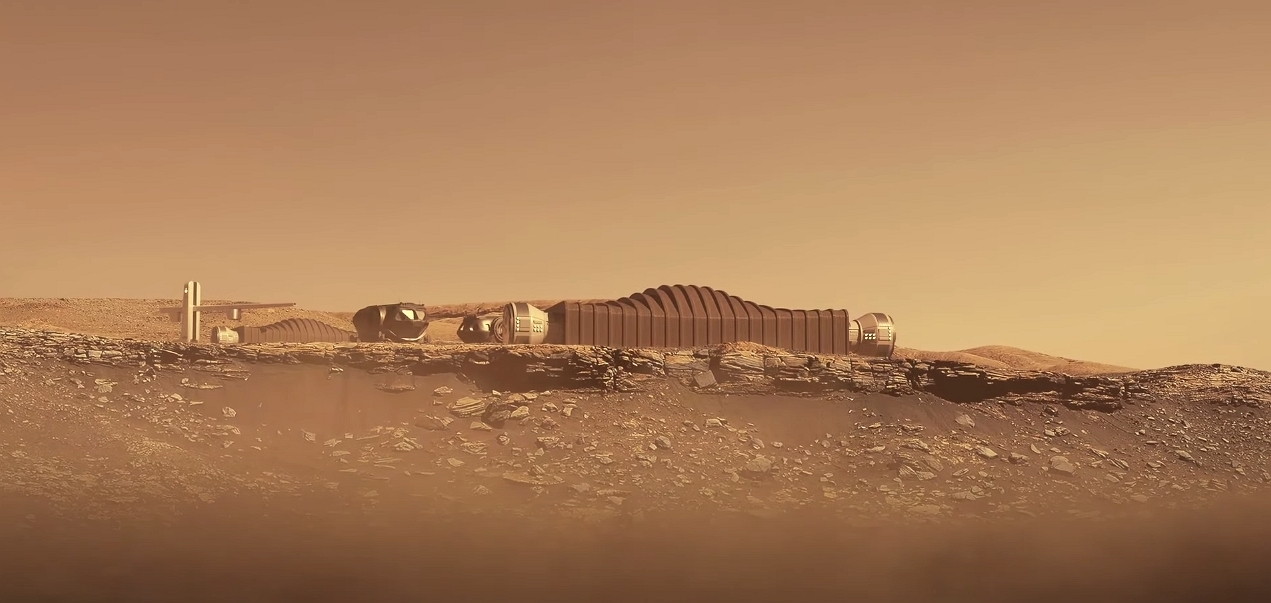Want to Pretend to Live On Mars? For a Whole Year? Apply Nowhttps://phys.org/news/2021-08-mars-year.html Want to find your inner Matt Damon and spend a year pretending you are isolated on Mars? NASA has a job for you.
Want to find your inner Matt Damon and spend a year pretending you are isolated on Mars? NASA has a job for you.To prepare for eventually sending astronauts to Mars, NASA began taking applications Friday for four people to live for a year in Mars Dune Alpha. That's a 1,700-square-foot Martian habitat, created by a 3D-printer, and inside a building at Johnson Space Center in Houston.
The paid volunteers will work a simulated Martian exploration mission complete with spacewalks, limited communications back home, restricted food and resources and equipment failures.
NASA is planning three of these experiments with the first one starting in the fall next year. Food will all be ready-to-eat space food and at the moment there are no windows planned.
Some plants will be grown, but not potatoes like in the movie "The Martian." Damon played stranded astronaut Mark Watney, who survived on spuds.
"We want to understand how humans perform in them," said lead scientist Grace Douglas. "We are looking at Mars realistic situations."
The application process opened Friday and they're not seeking just anybody. The requirements are strict, including a master's degree in a science, engineering or math field or pilot experience. Only American citizens or permanent U.S. residents are eligible. Applicants have to be between 30 and 55, in good physical health with no dietary issues and not prone to motion sickness.
https://www.nasa.gov/chapea/participate... Attitude is key, said Hadfield, who has a novel "The Apollo Murders" coming out in the fall. He said the
participants need to be like Damon's Watney character: "Super competent, resourceful and not relying on other people to feel comfortable."----------------------------------------------
... bring Duct Tape---------------------------------------------------

American construction 3D printing company ICON has been awarded a subcontract from NASA to deliver a 3D printed habitat, known as Mars Dune Alpha, at NASA’s Johnson Space Center as part of NASA’s Crew Health and Performance Exploration Analog (CHAPEA). ICON’s next-gen Vulcan construction system will complete a 1,700 square-foot structure that will simulate a realistic Mars habitat to support long-duration, exploration-class space missions.
CHAPEA, is a sequence of three one-year Mars surface mission simulations at the NASA Johnson Space Center in Houston. The analog missions will provide valuable insights and information to assess NASA’s space food system, as well as physical and behavioral health and performance outcomes for future space missions. NASA will use research from the Mars Dune Alpha simulations to inform risk and resource trades to support crew health and performance for future missions to Mars when astronauts would live and work on the Red planet for long periods of time.
Future space exploration habitats have the potential to be 3D printed with additive construction technology to eliminate the need to launch large quantities of building materials on multiple flights, which would be cost-prohibitive.
Life in Mars Dune Alpha will resemble the expected experience for those living in a future Mars surface habitat. Designed by BIG-Bjarke Ingels Group, the layout of the innovative structure is organized in a gradient of privacy. Four private crew quarters will be located on one end of the habitat; dedicated workstations, medical stations and food-growing stations are located on the opposite end, with shared living spaces found in between. Varying ceiling heights vertically segmented by an arching shell structure accentuate the unique experience of each area to avoid spatial monotony and crewmember fatigue. A mix of fixed and movable furniture will allow crew members to reorganize the habitat according to their daily needs, as will the customizable lighting, temperature, and sound control – helping regulate the daily routine, circadian rhythm, and overall well being of the crew.
... Today, NASA has begun its recruitment for the long-duration Mars mission analog study inside the 3D printed habitat. Applications to participate as crew are being accepted through mid-September 2021 for the one-year analog mission that starts in Fall 2022.
